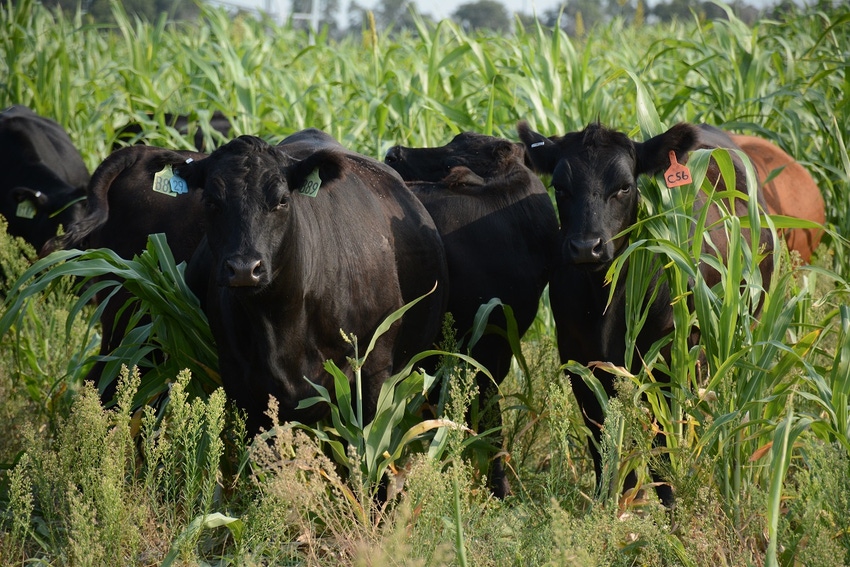July 17, 2018

Don’t be led into a false sense of security by thinking nitrate-prone forages such as forage sorghums cut in the afternoon or evening are safer.
For many years, one piece of advice has been to wait until afternoon to cut forage sorghum for hay if anticipated nitrate levels are marginally high. This was based on the assumption the plants continue soil nitrate uptake during nighttime hours, followed by accelerated conversion of the nitrate to protein during daylight hours.
However, a study in Oklahoma several years ago showed this hypothesis does not provide safe forage.
To evaluate the significance of the change in nitrate concentration in forage sorghums during the day, OSU extension educators collected samples at two-hour intervals from 8 a.m. to 6 p.m. Five cooperators’ fields were divided into quadrants. Three random samples, consisting of ten stems each, were taken from each quadrant at the specified interval. The samples were analyzed at the Oklahoma State University Soil, Water, and Forage Analytical Laboratory to determine the level of nitrates in parts per million (ppm).
Samples showed the differences between fields and farms were substantial and significant, and that they were much larger than differences between forages harvested at different times of day.
The mean concentration of nitrate for individual farms varied from only 412 ppm to 8,935 ppm.
However, the mean nitrate concentrations across all farms were 3,857 at 8 a.m., 3,768 at 10 a.m., 4,962 at noon, 4,140 at 2 p.m., 4,560 at 4 p.m., and 4,077 at 6 p.m.
Most laboratories consider nitrate concentrations at, or above 10,000 ppm potentially lethal. Ultimately, time of day of harvest did not impact nitrate concentration or proportion of dangerous samples of forage sorghum hay.
The data is in the 2008 OSU Animal Science Research Report.
To learn more about nitrate toxicity, read the OSU Fact Sheet “Nitrate Toxicity in Livestock.”
Source: Oklahoma State University
You May Also Like




